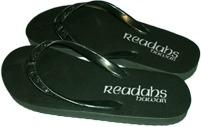Surrounded by a vast array of trees in Hawai’i, woodworkers have a strong “sense of place”—a direct connection to the land. ~Tiffany DeEtte Shafto (author)
 We’re lucky here in Hawaii to have such lush surroundings; thick trees that fill and cool our valleys and tall broad ones that cover our parks and give us shade—especially in the summer. We’re even luckier that many of these trees are unique to our islands and found nowhere else in the world. Like these trees, Hawaii is also home to many talented woodcrafters who struggle to protect our forests and help rebuild acres of wilderness that have been destroyed by development or invasive species and non-native plants.
We’re lucky here in Hawaii to have such lush surroundings; thick trees that fill and cool our valleys and tall broad ones that cover our parks and give us shade—especially in the summer. We’re even luckier that many of these trees are unique to our islands and found nowhere else in the world. Like these trees, Hawaii is also home to many talented woodcrafters who struggle to protect our forests and help rebuild acres of wilderness that have been destroyed by development or invasive species and non-native plants.
Contemporary Hawaii Woodworkers: the wood, the art, the aloha by Tiffany DeEtte Shafto and Lynda McDaniel is a labor of love for art and woodcraft in Hawaii. It features the work of 36 Hawaii craftsmen working in joinery, wood sculpture and wood turning. It’s a beautiful book with big, glossy color photographs that showcase the precision and skilled craftsmanship of these artists. It’s quite interesting to read about how and why they work so hard, sometimes with little money or recognition, to create beautiful pieces that aren’t just functional but visually stunning. I found it intriguing that nearly every artist said that the wood itself is what inspires them to create, that the wood speaks for itself. For example, Marcus Castaing says of his furniture, “my muse is the wonderful expressions of beauty and elegance that Mother Nature reveals in these timbers. My job is to do right by these wonderful trees”.
Woodworking in Hawaii has taken on an aesthetic of its own since artists here are often cut off from the technical conventions of the worldwide woodworking community. The result is extraordinary as local wood artisans pioneer new and distinctive techniques. One of the most obvious and notable is Ron Kent, a self taught artist whose works are featured at the Louvre and Metropolitan Museum of Art. Emperor Akihito of Japan bought one of his pieces because he had never seen anything like it in all the world. I enjoyed reading the personal stories—funny, sad or sentimental, why certain pieces looked the way they did or why they were a certain color.
The last section of the book features detailed information about each of our amazing island trees with Hawaiian and scientific names, where and how they grow, the type of wood they produce and it’s physical characteristics. There’s also little tidbits about what each tree or wood is used for in the present and how they were once used by Hawaiians or were significant to culture and trade. This section also includes information on woodworking organizations and businesses in the islands, like Honomalino Wood Mill in Kona, who work to advocate responsible wood farming and care of the land.
Perhaps the most extraordinary thing about this book is that it is self-published and funded by donations. After many struggles to find a local publisher, Tiffany DeEtte Shafto successfully formed her own company Contemporary Publications to make sure that the lives of these artists and their creations were properly documented. In addition to several national awards, Contemporary Hawai’i Woodworkers won Honorable mention for design at this year’s Ka Pala Pala Po’okela Awards. You really couldn’t pick a more beautiful book to keep on your coffee table and help the environment at the same time. Limited, special editions of the book were crafted and signed by all of the artists and for every one of these special editions sold, a koa tree will be planted in the name of the purchaser. There are only a few more of these special editions available for purchase exclusively via their website.
At a crucial time when schools are replacing wood shop programs with technological curriculum; when traditional handcrafts and art are taking a backseat to modern platforms, this book is a testament to the enduring legacy of these 36 skillful craftsman.Visit the Contemporary Hawai’i Woodworkers website for links to all the artists pages and galleries, as well as other resources for wood crafting and replanting our forests.
*A copy of the book (ISBN-13: 978-0-615-29944-0) was provided to HBB courtesy of Contemporary Publications (2009) in exchange for a fair and honest review.




